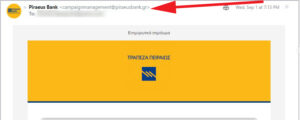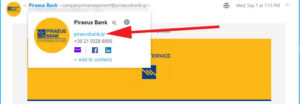Phishing scams are an increasingly serious problem, especially as citizens are doing more and more of their transactions online.
Scammers can easily deceive their victims by sending e-mails resembling their Banking services. These e-mails request users to enter their passwords in a pop-up window, therefore effectively giving up their private login details to their bank accounts.
But there is a simple way to make sure one never gets scammed by these e-mails.
The most important thing is to follow your official bank’s instructions on these matters, and contact them by phone as soon as you believe your bank account has been compromised.
Here is a step-by-step (including visual aid) to ascertain if an e-mail sent by your bank is actually legitimate.
- Do not open the e-mail sent. Look at the top left to the right where a mail appears in brackets. Hover over it and…

2. If a pop-up window appears, look at the mail inside it. If it is consistent with your bank as in image 2 you are good to go.

3. If it is not consistent with your bank e-mail, like in image 3, it is a phishing scam. DO NOT OPEN the e-mail.




































